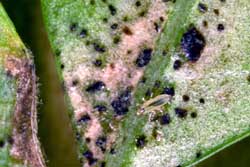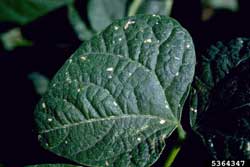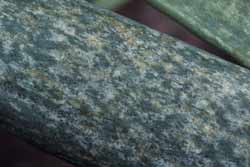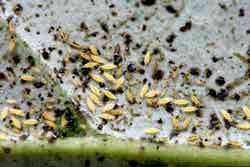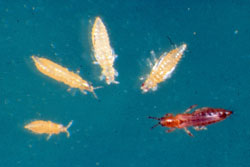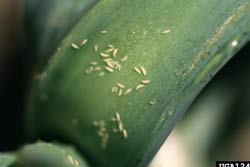Thrips
Thrips are tiny, almost microscopic (1/16-1/8 inch), insects with thin, feathery wings and rasping mouthparts. Most thrips feed on plants but a few species are beneficial predators that feed on other insects and mites. Plant injury is caused by both nymphs and adults rasping the bud, flower and leaf tissues of the host plants, and then sucking the exuding sap. This causes distorted and discolored flowers or buds and gray or silvery, speckled areas on the leaves. They produce large quantities of a varnish-like excrement which collects on leaves, creating an unsightly appearance. Thrips can be pests in flower and vegetable gardens, shrubs, trees and crops.
The word "thrips" signifies a single insect (i.e. there is no such thing as a thrip).
Click on images to view full-size
Identification and Control Information
- Fact Sheet: Thysanoptera–Thrips (PDF)—Missouri Botanical Garden
- Sucking Insects That Affect Vegetable Plants (PDF)—University of Maine Cooperative Extension
- Managing Western Flower Thrips in the Home Landscape (PDF)—University of Nevada Cooperative Extension
- Wild Blueberry Fact Sheet: Blueberry Thrips (PDF)—University of Maine Cooperative Extension
- Sugar Maple and the Pear Thrips (PDF)—Insect Diagnostic Laboratory, Cornell University
[Photos, left to right: David Cappaert, Michigan State University, Bugwood.org; Howard F. Schwartz, Colorado State University, Bugwood.org; Alton N. Sparks, Jr., University of Georgia, Bugwood.org; David Cappaert, Michigan State University, Bugwood.org; Department of Plant Pathology Archive, North Carolina State University, Bugwood.org; Whitney Cranshaw, Colorado State University, Bugwood.org]
